#climate hope
Text
"As solar panels heat up beyond 25°C, their efficiency decreases markedly. Green roofs moderate rooftop temperatures. So we wanted to find out: could green roofs help with the problem of heat reducing the output of solar panels?
Our research compared a “biosolar” green roof — one that combines a solar system with a green roof — and a comparable conventional roof with an equivalent solar system. We measured the impacts on biodiversity and solar output, as well as how the plants coped with having panels installed above them.
The green roof supported much more biodiversity, as one might expect. By reducing average maximum temperatures by about 8°C, it increased solar generation by as much as 107% during peak periods. And while some plant species outperformed others, the vegetation flourished.
These results show we don’t have to choose between a green roof or a solar roof: we can combine the two and reap double the rewards...
How did the panels affect the plants?
In the open areas, we observed minimal changes in the vegetation cover over the study period compared to the initial planted community.
Plant growth was fastest and healthiest in the areas immediately around the solar panels. Several species doubled in coverage. We selected fast-growing vegetation for this section to achieve full coverage of the green roof beds as soon as possible.
The vegetation changed the most in the areas directly below and surrounding the solar panels. The Baby Sun Rose, Aptenia cordifolia, emerged as the dominant plant. It occupied most of the space beneath and surrounding the solar panels, despite having been planted in relatively low densities.
This was surprising: it was not expected the plants would prefer the shaded areas under the panels to the open areas. This shows that shading by solar panels will not prevent the growth of full and healthy roof gardens.

What were the biodiversity impacts?
We used environmental DNA (eDNA) surveys to compare biodiversity on the green roof and conventional roof. Water run-off samples were collected from both roofs and processed on site using portable citizen scientist eDNA sampling equipment to detect traces of DNA shed by the species on the roof.
The eDNA surveys detected a diverse range of species. These included some species (such as algae and fungi) that are not easily detected using other survey methods. The results confirmed the presence of bird species recorded by the cameras but also showed other visiting bird species went undetected by the cameras.
Overall, the green roof supported four times as many species of birds, over seven times as many arthropods such as insects, spiders and millipedes, and twice as many snail and slug species as the conventional roof. There was many times the diversity of microorganisms such as algae and fungi.
Encouragingly, the green roof attracted species unexpected in the city. They included blue-banded bees (Amegilla cingulata) and metallic shield bugs (Scutiphora pedicellata).
How did the green roof alter temperatures?
The green roof reduced surface temperatures by up to 9.63°C for the solar panels and 6.93°C for the roof surfaces. An 8°C reduction in average peak temperature on the green roof would result in substantial heating and cooling energy savings inside the building.
This lowering of temperatures increased the maximum output of the solar panels by 21-107%, depending on the month. Performance modelling indicates an extensive green roof in central Sydney can, on average, produce 4.5% more electricity at any given light level.
These results show we don’t have to choose between a green roof or a solar roof. We can combine them to take advantage of the many benefits of biosolar green roofs.
Biosolar roofs can help get cities to net zero
The next step is to design green roofs and their plantings specifically to enhance biodiversity. Green roofs and other green infrastructure may alter urban wildlife’s activities and could eventually attract non-urban species.
Our green roof also decreased stormwater runoff, removed a range of run-off pollutants and insulated the building from extremes of temperature. A relatively inexpensive system provides all of these services with moderate maintenance and, best of all, zero energy inputs.
Clearly, biosolar green roofs could make major contributions to net-zero cities. And all that’s needed is space that currently has no other use."
-via GoodGoodGood, May 12, 2024
#green#green roof#biosolar#solar power#solar panels#rooftop solar#solarpunk#native plants#australia#sydney australia#biodiversity#conservation#climate change#climate action#climate hope#global warming#temperature#climate adaptation#cooling#good news#hope
602 notes
·
View notes
Text
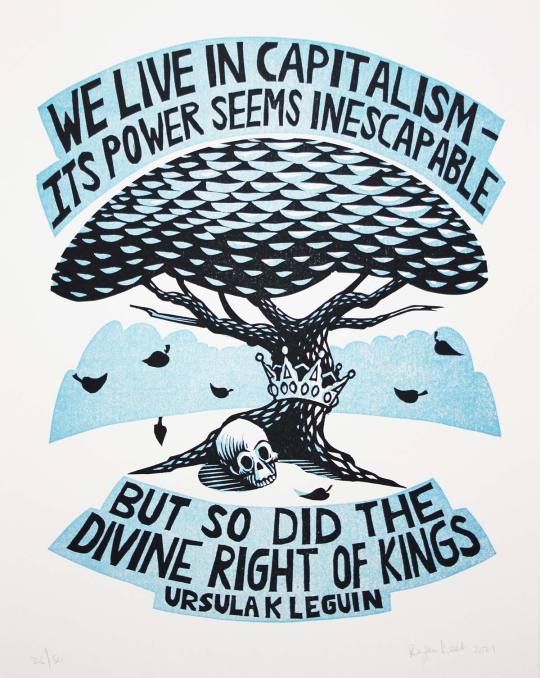
Artist credit:
#ursula k. le guin#hopepunk#hope punk#solar punk#solarpunk#futurism#climate and environment#climate action#climate hope#climate chaos#clean energy#capitalist society#capitalism#capitalist dystopia#resistance#faith in the future#economic justice#workers rights#imagine better
2K notes
·
View notes
Link
“It all starts with the transition to clean energy, now approaching full speed with 87 countries drawing at least 5% of their electricity from wind and solar. The US hit 5% in 2011 and surged past 20% renewable electricity last year. If the country follows the trend set by others at the leading edge, wind and solar will account for half of US power-generating capacity just 10 years from now. That would be years—or even decades—earlier than major forecasts.
[...] Successful technologies follow an S-shaped adoption curve. Sales move at a crawl in the early-adopter phase, then surprisingly quickly once things go mainstream. The top of the curve represents the last people to make the transition. Even in 2022, a tenth of humanity still doesn't have electricity.
Five percent isn't a universal tipping point. Some technologies flip sooner, others later, but the basic idea is the same: Once the tough investments in manufacturing have been made and consumer preferences start to shift, the first wave of adoption sets the conditions to go much bigger."
#green energy#clean energy#renewable energy#climate change#global warming#environment#ecology#climate hope#climate anxiety#environmental grief#good news#hope#slow horses#electrify#electrify everything#hopepunk
974 notes
·
View notes
Text



Eurasian griffon vultures (Gyps fulvus) in the Mariola mountains of Alcoi, Central Valencian Country.
This bird species had gone extinct in the area, but since the year 2000 the FAPAS Foundation has been working on a project to reintroduce them in the Canyet de les Pedreres fauna reserve area. The project has been successful and is now a referent when it comes to vulture populations in all the Iberian peninsula (which is saying a lot, considering that 90% of Europe's vultures live in the Iberian peninsula!), with about 80 wild vultures living there nowadays.
Once a week, the city council compiles the unwanted remains from local butchers' and brings them to the mountain for the vultures to eat. In that spot, there is a "hide" (a wooden cabin for birdwatching) where people can go to watch the vultures eating, as long as they stay silent to avoid disturbing the birds, though the vultures might take hours to come, since they're wild animals.
The local butchers, farmers, and hunters contribute to the project donating their unwanted meat, because the reintroduction of this species is mutually beneficial for the environment and for economical reasons. On the one hand, vultures exclusively eat dead animals and sometimes ill animals, which means that they help stop the spread of pathogens among animals, which also results in less illnesses in farm animals. On the other hand, by using vultures instead of industrial plants to treat and dispose of meat products, we can avoid economical expense and reduce the amount of greenhouse gases that would be emitted during the industrial treatment.
Photos by Eva Máñez, text translated and adapted from Raúl Abeledo Sanchis, both published in Guía Repsol.
#natura#alcoi#país valencià#fauna#sustainability#environment#wildlife#vulture#gyps fulvus#nature#birds#birdwatching#wildlife photography#ecology#environmentalism#solarpunk#climate hope#climate#ecofriendly#wild animals
76 notes
·
View notes
Text
#good news#nature#science#environmentalism#environment#climate change#climate change mitigation#climate crisis#climate hope#energy#renewable power
115 notes
·
View notes
Text
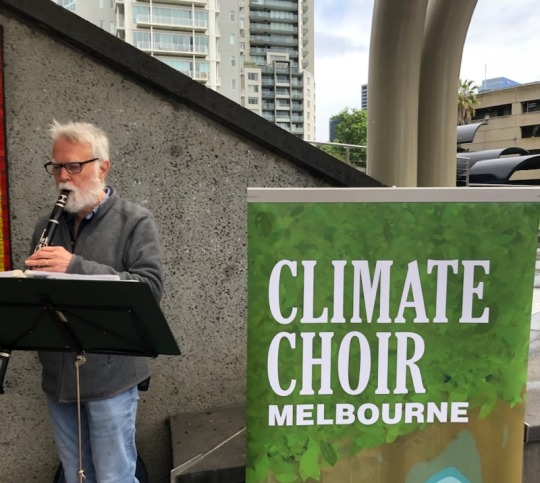
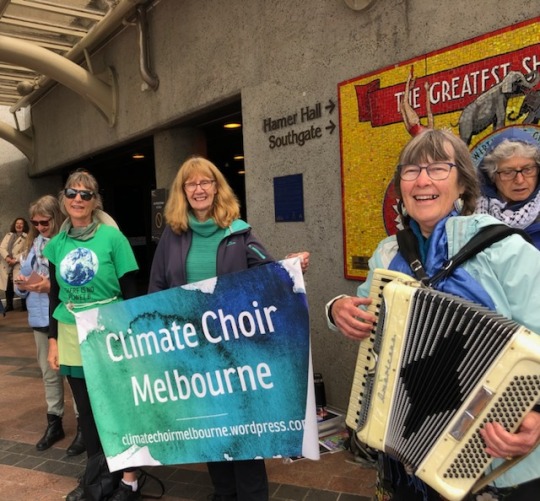

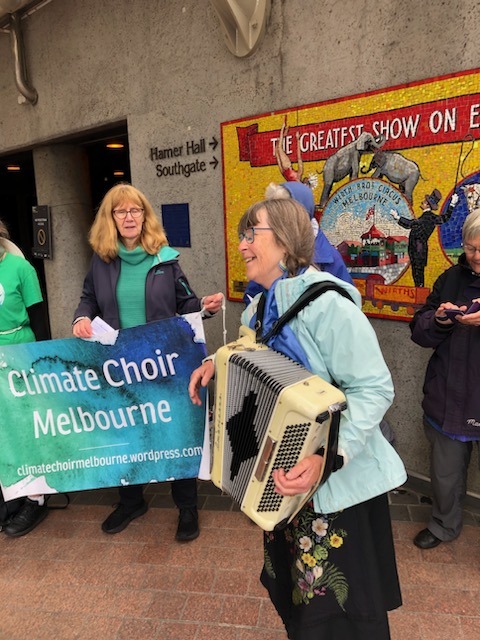
A joyful and effective means of spreading your urgent message. Start up a Climate Choir in your community.
#climate choirs#jail climate criminals#we want climate action now#climate change#cambio climático#climate crisis#prepare for climate change#greenwashing#big oil#fossil fuel industry#plastic#climate washing#floods#climate activism#calentamiento globa#medio ambiente#IPPC#climate hope#sea level rise#late stage capitalism#victims of capitalism#klimakatastrophe#klimawandel#changement climatique#qihou bianhua#izmeneniye klimata#cambiamento climatico#気候変動#ज��वायु प��िवर्तन#jalavaayu parivartan
26 notes
·
View notes
Text
Sorry for the repeated enviromental posting over the past few days its the only way i'm able to climb my way out of complete climate doomspiralling and sobbing to myself about unrealistic worst case scenarios. Back to the fandom blogging for a bit I can't afford another breakdown and spiral. I literally can't. I need hope at least just for tomorrow.
#the existensial dread will still be around for quite a while#but i blocked several doomerist yt channels and r/collaspe and i feel better after doing actual research#tw climate change#tw climate doomerism#tw doomscrolling#catastrophism#climate change#climate justice#ecology#biodiversity#humanity#climate hope
74 notes
·
View notes
Text
Reminder that we need to keep hope about the world. If we lose hope, then we'll be dooming ourselves to face the fate we all fear. Apathy does nothing but seals our fates. It sucks, its hard, but for the love of god, keep hope, keep fighting for change, and keep working towards a brighter future.
#there is still hope#there fucking is#its grim#its serious#but there is fucking hope#and constantly focusing on the bad and freaking yourself and others out to the point of hopelessness is not productive#all it does is play into the wishes of the people making the world this shitty#climate change#climate crisis#climate hope#anti capitalist#anti genocide#hope
9 notes
·
View notes
Text
Dear world. Dear those who have the power to stop this. Dear people who could make a change but won’t
By the time you get this it will be too late
For days upon end this month fires have raged and burned, yet you say ‘it’s not that bad! The smoke is fine to breathe’, and you continue to heal the promises you made as you dig another oil line.
This week has started for me with a heat wave, sweat dribbling down my legs, and an itchy nose from all the polen. Storms have been raging on the evenings, and as much as I like storms -for they are very calming- I can’t help but think that the storm’s usually come after the summer, not right at the beginning. Or just before, even, in spring. But no, here are the storms and the heat waves in June.
It wasn’t this warm this time last year, or the year before, or the year before that. Or any year I can remember in fact. We had to switch out our winter duvets for the summer ones much sooner this year, and already I don’t want to have a blanket on my bed at all. I hate the sounds of the plug in fans whirring through the night; this country doesn’t come with air-con in the houses, just some fancy schools and offices for rich workers ran by richer people. I bet they have air-con in parliament, where they sit and discuss the rising temperatures, melting ice caps, and never seem to really do anything about it.
Did you know that just stop oil disrupted a flower festival last week? I wouldn’t choose that particular place myself, but it’s admirable work when the government won’t listen any other way, and the news will not report the legal non-disruptive work. And yet my friend, who was writing a book about climate change when we were eleven, still called them the morons. Funny that.
I feel guilty, every time I have a tuna sandwich or get driven down into town when I could have walked. I really shouldn’t. And yet rich people who could speak out and make a difference take half an hour trips on private jets and feel no remorse. It saves them time and convenience. And they eat rare caviar. Big oil and fossil fuel companies that destroy habitats and pump out atmosphere destroying gasses only care about the money they receive and not the impact that what they are doing has. They don’t care that a rare species of bird just went extinct. That a polar bear cub didn’t make it out of its first weeks after I near starved then drowned due to their not being enough ice or food around.
Dear people, while you sit back and watch this happen, just know that you will be dead before this get too bad, and I’ll be left to pick up your mess. I’d not want to go into politics. I want to act or dig up segments of the past and marvel over what happened. But I might just need to take a seat at that table to get things to go right.
#poem#poem of the day#poetsofinstagram#poemsbyme#poetic#poetsandwriters#poet#poetblr#poets corner#young poets#poems and poetry#poetry#environmetalists#ecofriendly#activist poetry#climate chaos#climate hope#climate action#climate change#global crisis#global warming#ice caps#fires#help us#stand up#unite#do something#today#before we all#burn alive
44 notes
·
View notes
Text
This Is The Best Book I’ve Ever Read to Empower Anyone with Real Climate Hope
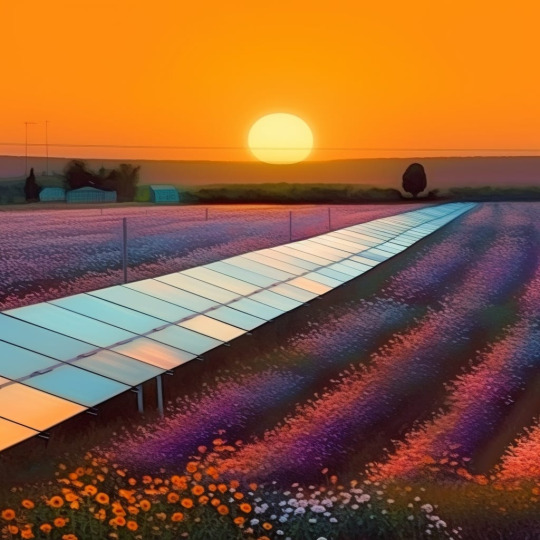
READ MY REVIEW👉 Not Too Late: Changing the Climate Story from Despair to Hope
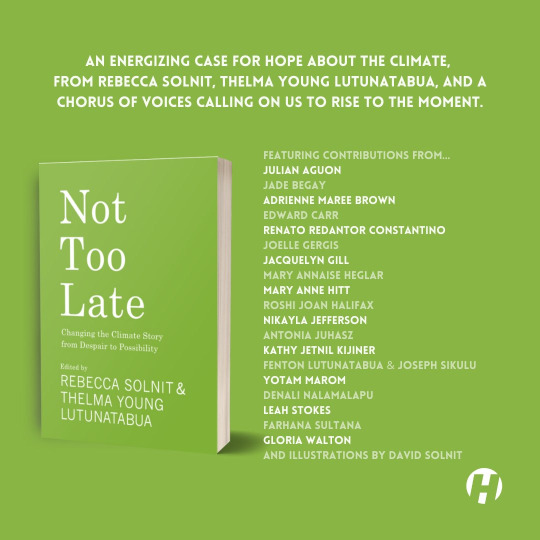
"To hope is to accept despair as an emotion but not as an analysis. To recognize that what is unlikely is possible, just as what is likely is not inevitable."
—Rebecca Solnit
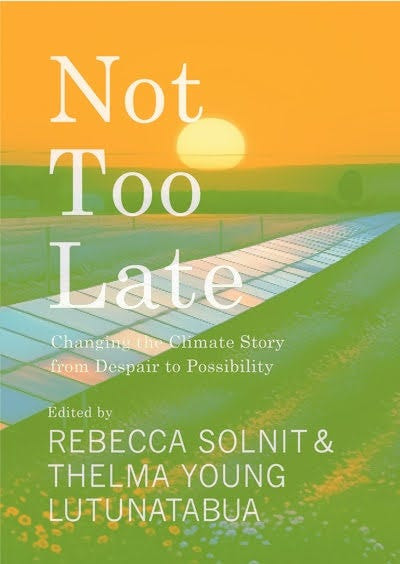
What gives me hope is that human history is full of examples of people across the ages who have risen to face the great challenges of their time and have succeeded. Victory is not the arrival in some promised land; it is the series of imperfect victories along the way that edge us closer to building the critical mass that eventually shifts the status quo.” —Rebecca Solnit
Not Too Late: Changing the Climate Story from Despair to Hope
#climate hope#climate#climate change#climate art#climate optimism#climate action#climate justice#climate book#book review#book recommendations#environment#earth month#book#books#rebecca solnit#renewable energy#renewable power#courage#climate solutions#favorite quotes#quotes#inspiration#inspiring quotes#envrionment#environmental communication#climate communication#favorite books#despair#possibility#climate story
38 notes
·
View notes
Text
"Amsterdam’s roofs have just been converted into a giant sponge that will make the city more climate resilient.
The Dutch have always been famous for their ability to control water, born out of the necessity of their homeland, much of which is below sea level.
Now, their expert water management skills are transforming the city skyline in the capital city of Amsterdam from one of terracotta tile, concrete, and shingles into green grass and brown earth.
It’s part of a new climate-resiliency trend in architecture and civic planning known as the ‘sponge city concept,’ in which a garden of water-loving plants, mosses, and soil absorbs excess rainwater before feeding it into the building for use in flushing toilets or watering plants on the ground.
If heavy rains are predicted, a smart valve system empties the stored rainwater into the municipal storm drains and sewers in advance of the weather, allowing the roof to soak up water and reduce flooding in the city.
In this way, the rooftops of buildings can be wrung out and filled up just like a sponge.
In Amsterdam, 45,000 square meters, or 11 acres of flat metropolitan rooftops have already been fitted with these systems, and the contracting firms behind the technology say they make sense in dry climates like Spain just as much as in wet climates like Amsterdam...
A 4-year project of different firms and organizations called Resilio, the resilient network for smart climate adaptive rooftops, rolled out thousands of square meters of sponge city technology into new buildings. As with many climate technologies, the costs are high upfront but tend to result in savings from several expenditures like water utilities and water damage, over a long-enough time horizon...
All together, Amsterdam’s sponge capacity is over 120,000 gallons.
“We think the concept is applicable to many urban areas around the world,” Kasper Spaan from Waternet, Amsterdam’s public water management organization, told Wired Magazine. “In the south of Europe–Italy and Spain–where there are really drought-stressed areas, there’s new attention for rainwater catchment.”
Indeed the sponge city concept comes into a different shade when installed in drought-prone regions. Waters absorbed by rooftops during heavy rains can be used for municipal purposes to reduce pressure on underground aquifers or rivers, or be sweated out under the Sun’s rays which cools the interior of the building naturally.
Additionally, if solar panels were added on top of the rooftop garden, the evaporation would keep the panels cooler, which has been shown in other projects to improve their energy generation.
“Our philosophy in the end is not that on every roof, everything is possible,” says Spaan, “but that on every roof, something is possible.”
Matt Simon, reporting on the Resilio project for Wired, said succinctly that perhaps science fiction authors have missed the mark when it came to envisioning the city of the future, and that rather than being a glittering metropolis of glass, metal, and marble as smooth as a pannacotta, it will look an awful lot more like an enormous sculpture garden."
-via Good News Network, May 15, 2024
#amsterdam#netherlands#green roof#blue roof#city planning#urban#urban landscape#flood#climate change#climate action#climate emergency#climate hope#solarpunk#hope posting#go green#eco friendly#climate adaptation#sponge city#urban planning#good news#hope#rooftop garden
272 notes
·
View notes
Text
From Lexi Drumonde's video on Hopepunk.

#hopepunk#hope punk#solar punk#solarpunk#futurism#misinformation#clean energy#renewable energy#nihilsm#nihilizm#climate and environment#climate hope#climate action#climate doom#doomerism
144 notes
·
View notes
Text
It is so hard to stay optimistic about environmental concerns when so much bad news is constantly coming out. But at the end of the day, climate hope fuels positive social change better than climate doomerism, so all that I can do is let climate hope fuel my daily actions and my politics. This is hard but very important to remember
17 notes
·
View notes
Video
youtube
If you only ever watch one video about climate action, I recommend this one.
If you’ve ever thought, “I want to help stop climate change or protect the environment but I have no idea where to start or what I as a single person can actually do” then this video is for you.
TL/DR: There are actions that are impactful for anyone, like protesting, voting, etc. but the most impactful action for each individual person depends on your unique strengths and resources. Finding your “climate superpower” based on what you are already good at and passionate about can amplify your impact.
#climate action#climate change#environment#global warming#climate adaptation#hopepunk#solarpunk#what you can do#how you can help#inspiration#hope#climate hope#eco anxiety#climate activism#climate change venn diagram
665 notes
·
View notes
Text
“We need to build things that will last 50-100 years that will be resilient to these climate changes.”
"Met Éireann has also presented its latest data in relation to driving rain. Wind-driven rain against a wall may be partially absorbed or penetrate through cracks in the wall, therefore increasing the risk of damage to the building fabric. It is particularly prevalent in homes built in the west of Ireland.
“The current building standards use driving rain in their calculations of what blocks to use and in what construction methods to use in different parts of the country, but that data is 20 years old give or take,” he said."
#jail climate criminals #we want climate action now #climate change #cambio climático #climate crisis #prepare for climate change #greenwashing #big oil #fossil fuel industry #plastic #climate washing #floods #climate activism #calentamiento global #medio ambiente #IPPC #prepare for climate change #climate hope #sea level rise #late stage capitalism #victims of capitalism #klimakatastrophe #klimawandel #changement climatique #qihou bianhua #izmeneniye klimata #cambiamento climatico #気候変動 #जलवायु परिवर्तन #jalavaayu parivartan #das Alterações Climáticas
#sea rise#jail climate criminals#we want climate action now#climate change#cambio climático#climate crisis#prepare for climate change#greenwashing#big oil#fossil fuel industry#plastic#climate washing#floods#climate activism#calentamiento global#medio ambiente#IPPC#climate hope#sea level rise#late stage capitalism#victims of capitalism#klimakatastrophe#klimawandel#changement climatique#qihou bianhua#izmeneniye klimata#cambiamento climatico#気候変動#जलवायु परिवर्तन#jalavaayu parivartan
29 notes
·
View notes
